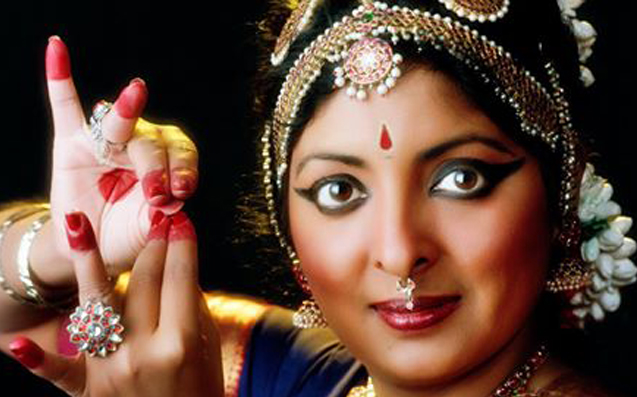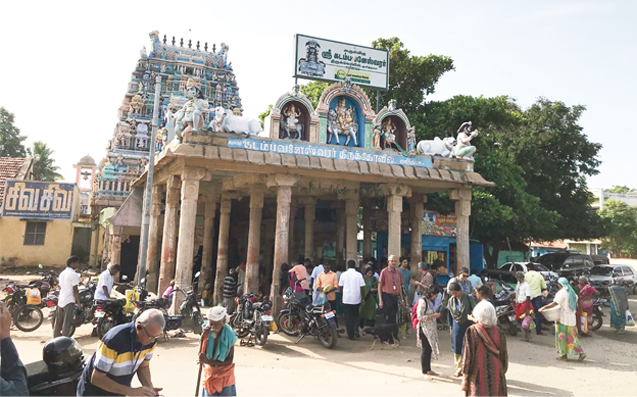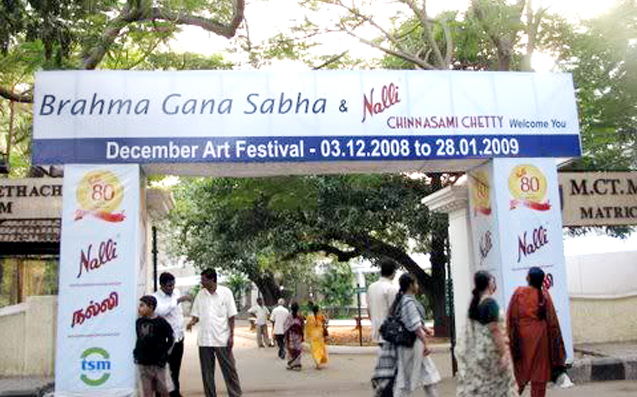Listening to the music of Palghat K.V. Narayanaswamy as a young girl was an epiphany moment that changed her entire perspective on music. As a curious backbencher during season concerts at Sri Krishna Gana Sabha, her interest in music further swelled. With no musical lineage to rely on, she had to work doubly hard towards sustaining her interest in music. Her sincerity towards the art and her perseverance is what has brought her to where she is today. Dubbed by critics as a versatile and an engaging performer, Gayathri Venkataraghavan has carved a niche for herself. Her father, however foretold this when she was just ten days old! Christening her after eminent vainika, E. Gayathri was perhaps the harbinger for more things to come. An obedient child, Gayathri started training under Lakshmanan Vadhyar when she was seven years old and after his demise she went on to learn from Rajalakshmi, who nurtured Gayathri’s love for music with small songs and kritis. Later, in 1981, Gayathri came under the tutelage of Padma Veeraraghavan, direct disciple of Ariyakudi Ramanuja Iyengar and K.V. Narayanaswamy. Enamoured by KVN’s music, learning under Padma Veeraragahavan was a turning point for Gayathri. Her listening and learning repertoire widened and she actively started pursuing her interest in music. Seven years with her guru Padma, Gayathri spent many hours in rigorous practice and also participated in several competitions conducted by prestigious sabhas in Chennai. In 1990, Gayathri came under the guidance of vidwan A. Sundaresan.
I met Ramya Harishankar for the first time when I attended a production of Sweating Sarees in Irvine, California. The show was preceded by outdoor events, done in collaboration with dancer-scholar Priya Srinivasan and Susan Roseman. The programme, which began in the park, was followed by a presentation by her students in an outdoor square just outside the city hall. The music ensemble included tabla and a number of Central American percussion instruments. I remember marveling at the coming together of so many disparate peoples, artists, musicians and culture in Irvine, which has the reputation of being an extremely conservative place. I also remember being quite astonished at seeing students of Western modern dance and students of Bharatanatyam effortlessly presenting together in harmony. The programmes were not just interesting and thought provoking, but also graceful and elegant. At the end we had Ramya sitting to share the most traditional of abhinaya sequences while she sang and evoked moments of delicate passion and endearment. Those moments stayed with me since the two-day event in 2016 titled Dance Conversations (see Sruti November 2016).
The Cauvery, as it flows between Karur and Tiruchi, widens somewhere near Tirunarayanapuram and continues as such till it reaches Gunaseelam where it begins to branch off as the Kollidam, thereby forming the island of Srirangam. This wide section is known as the Akhanda Cauvery; and located along its banks is a triad of Siva temples, all famed for verse and song. Kalai Kadambar, Mathiya Sokkar, Anthi Venginathar is the oft repeated slogan here, as you are expected to visit all three on the same day and in the same order. Kadambar Koil in Kulithalai is to be visited in the morning, followed by Tiruvatpokki (also known as Ratnagiri or Iyermalai) in the afternoon, and Maragachalam (Tiruingoimalai) in the evening. This is easier said than done, for while the first is at ground level, the other two are on hills and can only be accessed by tough ascents. And yet, many savants, saints and singers have done it before us. All three are ‘padal petra sthalams’ in that Tevaram verses have been sung in their praise, the first two by Appar and the last by Gnanasambandhar. There are other common factors too—the first two are linked by the same sthala puranam while the second and third share a common story. Besides, the three lingams point in three cardinal directions—at Kulithalai Lord Siva faces north, at Iyermalai He faces west, and at Tiruingoimalai He faces east. All said and done, these are fascinating shrines that are off the beaten track of pilgrims and are well worth a visit.
Brahma Gana Sabha (BGS) turned fifty in 2019. The sabha has been promoting classical arts, theatre and also encourages young performers to showcase their talents. Founded by like-minded friends, some of whom were also the original committee members of Narada Gana Sabha, BGS was established in 1969. The sabha was inaugurated on 14 April 1969 by Justice K.S. Venkataraman, followed by a vocal concert by Semmangudi Srinivasa Iyer. Brahma Gana Sabha was launched with Chitra Narayanaswamy as president, N. Sethuraman and M.S. Muthu as secretaries and M. Krishnamurthy as treasurer along with vice presidents M.V. Murugappan, Moolangudi Jayaraman, Nalli Rangaswami Chetti, Meenakshi Subramaniam, Sudharani Raghupathy, AL Lakshmanan and a few others like R.K. Tagat, Pattabhiraman, Kothandaraman, Viswanathan, Kasi Viswanathan and General Stores Sundaram. BGS initially hosted its programmes at the Children’s Club and P.S. High School in Mylapore. Later, it made an arrangement with the Music Academy whereby BGS conducted its monthly programmes there at a subsidised rent, and in return, agreed to redesign the Academy’s stage suitably for dramas and other big shows. Secretary, M.S. Muthu was instrumental in redesigning the Music Academy’s stage under the guidance and supervision of veteran actor and dramatist, R.S. Manohar.
CONTENTS
5 Readers write
7 News & notes
14 Birthday calendar
16 Gayathri Venkataraghavan
26 The Indian diaspora v Ramya Harishankar
34 Heritage sthalams v Kadambar
Koil
37 Organisation v Brahma Gana Sabha
40 News & notes v (continued)
44 S. Rajam’s paintings v Saptaswara devata: Ri
4 6 From the Editor
Front
Cover: Gayathri Venkataraghavan
Ramya Harishankar (Photo
by V.K. Rajamani)
No.
432





